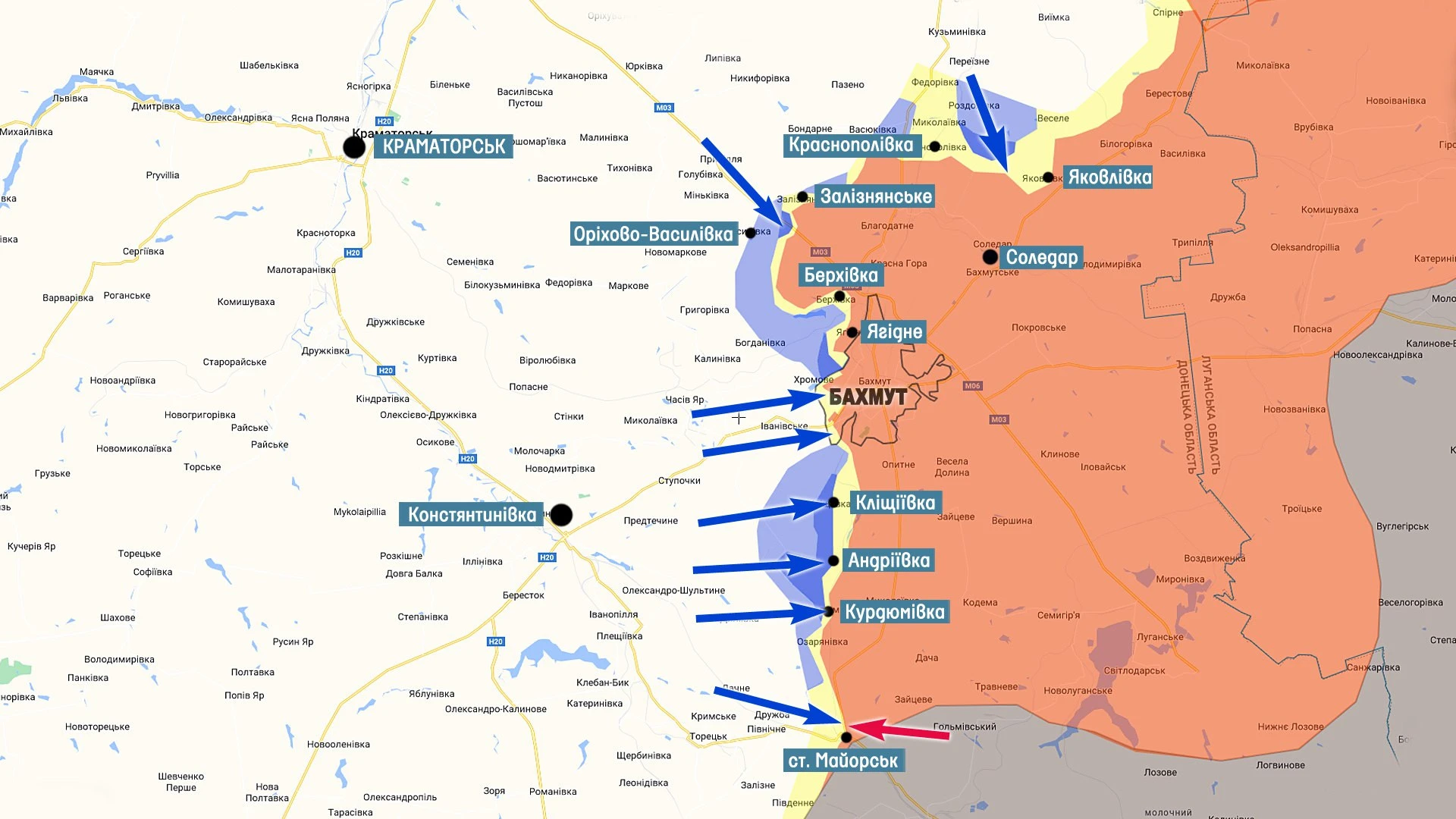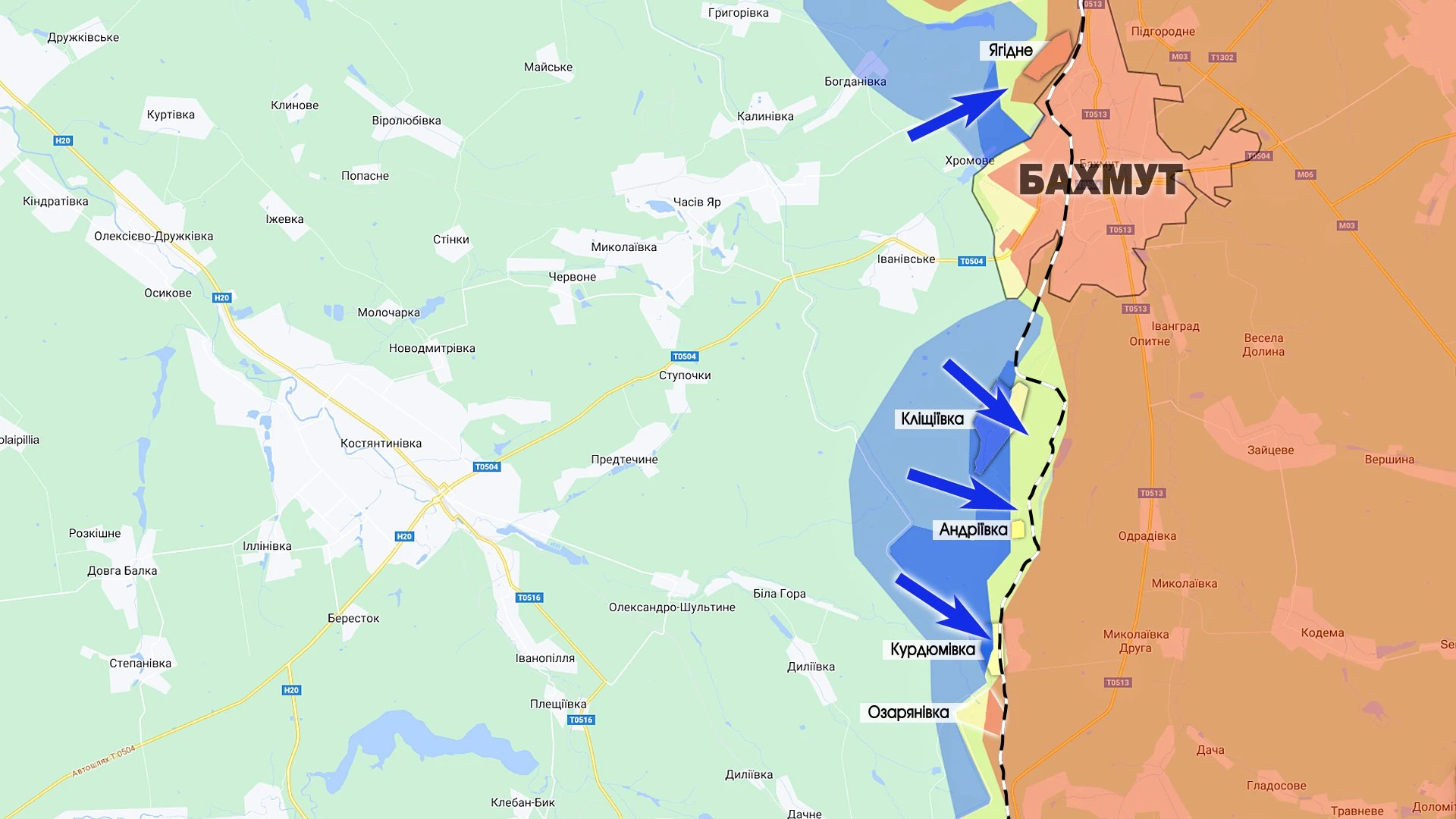
Ukrainian military disrupt Russia’s supply routes down south, and soon this will affect whole front – military expert Serhiy Zgurets
They used long-range weapons to damage two bridges in the Russia-occupied territories at once
Strikes on the bridges in Kherson region
Let's start with some good news that will have a lasting impact, especially if it happens regularly. The main idea here is that repeating this action can bring positive results over time. Recently, there was a notable event. Two bridges in an area of Ukraine that's currently under occupation by Russians were targeted and hit by long-distance weapons. The Chonhar highway bridge got damaged, and the bridge connecting Henichesk with the Arabat Spit was also hit. This bridge is an alternative route from Crimea to the occupied southern part of Ukraine.
The confirmation for these strikes came from the Ukrainian Armed Forces. These events took place on August 6, which is celebrated as Air Force Day. Skilled pilots flying Su-24 aircraft carried out these strikes, using advanced Storm Shadow missiles. Designed in the UK, they have a range of nearly 300 km and carry a 450 kg warhead. To down them is a challenging task.
Interestingly, on Air Force Day, a representative from this branch of the military shared some insights about the use of Storm Shadow missiles. Although not specifically related to these bridge attacks, the explanation provides context. Typically, a combination of three tactics is employed by the Ukrainian side to ensure successful target destruction. First, an American ADM-160 missile is launched as a decoy. It imitates a real cruise missile, fooling the opponent. The Russians respond by activating their anti-aircraft defenses, which gives away the positions of their air defense systems. Then, the HARM anti-radar missile is launched to take out these air defense systems. Once the skies are cleared, the Storm Shadow missile enters the scene. But even without this coordinated approach, the British missile is highly effective in neutralizing enemy targets.
In essence, due to the accurate and well-planned strikes on the Chonhar and Henichesk bridges, the Armed Forces of Ukraine have managed to severely disrupt the movement and supply of Russian troops in the southern region. The repercussions of this action will likely be felt on the battlefield across the entire front line in the coming days and weeks.
Frontline situation
Currently, we know that our front line is strong and changing because of our soldiers in the south and east. The main focus of the enemy is on Bakhmut. Our Army and Defense Forces are using a strategy of slow but steady progress there. The 3rd separate assault brigade of the Ukrainian Armed Forces is working in the southern part of Bakhmut. This brigade has become legendary due to the impressive work of its commanders, soldiers, and units.

Maksym Zhorin, who is the deputy commander of the 3rd separate assault brigade and a major in the Armed Forces, explained that our Defense Forces are in a situation where they have less of everything – from people to ammunition, artillery systems, tanks, and armored vehicles. The enemy has more resources in all these areas. Still, our soldiers are finding ways to move forward. However, this is getting harder because the enemy is using experienced units to slow us down. This makes our progress a bit slower, but it doesn't stop it. The enemy has tried to fight back, but their attempts have not been successful.

He also pointed out that it's necessary for the Armed Forces' assault groups to include engineers and sappers. These sappers accompany the assault teams to ensure safe passage in our current conditions. They have specific tasks related to creating paths not only for soldiers but also for vehicles. This kind of work is very risky. Sappers hold a position that's both dangerous and important. Without their efforts, moving forward is nearly impossible due to the dense and varied placement of mines by the enemy. The enemy uses different types of mines like remote-controlled, anti-personnel, and anti-tank mines in various directions. In every assault, the Armed Forces have encountered enemy mines. After passing through and defeating the enemy, a large area filled with mines remains, which takes a considerable amount of time to clear.
Zhorin also mentioned that every assault group in the Armed Forces includes a medic who is also a skilled marksman. He is a regular fighter with small arms but possesses more knowledge about tactical medicine than the rest of the group. This means that along with combat skills and tactics, they also learn how to provide medical aid. Additionally, there's another medic carrying a medical backpack in the group. They establish routes for evacuation, points for stabilization, and vehicles for resuscitation. All of this is part of a complex system that plays a crucial role in saving lives.
Zhorin pointed out that the enemy has been increasingly using drones. The Russians are improving their skills and knowledge in this area. Almost every day, there are instances where the Defense Forces have to deal with the enemy's attempts to take down their strike drones. The enemy employs Lancets daily to target our equipment and artillery systems. The enemy's Orlan and ZALA UAVs are also active around the clock, causing significant damage to our defenders. The soldiers have a clever trick to protect their equipment and artillery systems, but I can't share the details because it's classified information.
Ukrainian HIMERA radio stations
The Ukrainian company HIMERA creates and provides advanced tools to our Armed Forces. They specialize in dependable and practical communication devices. The military has shared positive comments about the HIMERA radio systems.
According to Oleksiy Oliynyk, a representative from HIMERA, their products include radio systems for tactical communication. These radios are designed to be secure against spying and interference, and they are tailored to meet the needs of the military. The company is currently making sure that these radio systems are exclusively used by the military and not civilians, as there is a scarcity of these products at the frontline. The radio systems are solely available for purchase by the military.
HIMERA's radio systems offer highly secure communication with a technique called frequency hopping. This technology, known as FHSS — frequency-hopping spread spectrum, provides protection against interference. It means that the enemy would require significant power to interfere with the radio signals. Furthermore, these stations are not only hard to disrupt, but they are also difficult to detect in the air.
He added that Motorola's radio models are easily seen by radio reconnaissance, while other brands have no protection at all. The solution from HIMERA is perhaps the only one that gives strong defense against radio monitoring and interference, and it costs much less than Motorola.
Oliynyk pointed out that the company's engineers have improved HIMERA's communication range. Now, to talk between two far points, you just need to place a few small and hard-to-notice stations in between, making them simple to hide. This system is in action and works well.
He explained that Ukrainian soldiers who want secure communication on the front lines can purchase these radio stations. The main way to reach HIMERA company is through the Signal messenger. Their contact details are also available on the company's Facebook page, and it's easy to find them through a search.
- News














































